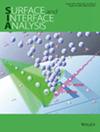Maximizing visible Raman resolution of nanodiamond grains fabricated by coaxial arc plasma deposition through oxygen plasma etching optimization
IF 1.8
4区 化学
Q4 CHEMISTRY, PHYSICAL
引用次数: 0
Abstract
Among the nondestructive carbon material characterization tools, the prominence of visible Raman spectroscopy has surged remarkably for many years due to its ability to explore a diverse array of carbon bonding configurations. However, to fully unlock the distinctive features concealed within carbon composite materials, additional specimen treatments or precise spectroscope calibrations are necessary. In the same regard, the tiny diamond grain size (5–10 nm) and the pronounced amount of sp2 carbon in the ultrananocrystalline diamond film represent major challenges in visible light excitation. In this work, we employ calibrated oxygen plasma reactive ion etching conditions to manifest the nanodiamond visible Raman signature from ultrananocrystalline diamond/amorphous carbon composite (UNCD/a-C) films fabricated by coaxial arc plasma deposition. Upon plasma etching, the broad defect band in the visible Raman spectra converged toward the diamond characteristic Raman peak at 1332 cm−1. A detailed explanation of band components of the Raman spectra is extracted through peak fitting procedures. The results of Raman spectroscopy are further correlated with the electrical characteristics of the nitrogen-doped UNCD/a-C films due to the optimized oxygen plasma etching processes.通过优化氧等离子刻蚀,最大限度地提高同轴电弧等离子沉积法制造的纳米金刚石晶粒的可见拉曼分辨率
在非破坏性的碳材料表征工具中,可见光拉曼光谱因其能够探索各种碳键构型,多年来一直备受推崇。然而,要完全揭示隐藏在碳复合材料中的独特特征,还需要额外的试样处理或精确的光谱校准。同样,超纳米金刚石薄膜中微小的金刚石晶粒尺寸(5-10 nm)和明显的 sp2 碳含量是可见光激发的主要挑战。在这项工作中,我们采用校准的氧等离子体活性离子刻蚀条件,从通过同轴电弧等离子体沉积制造的超纳米晶金刚石/非晶碳复合(UNCD/a-C)薄膜中显示出纳米金刚石可见光拉曼特征。等离子刻蚀后,可见拉曼光谱中的宽缺陷带向 1332 cm-1 处的金刚石特征拉曼峰靠拢。通过峰值拟合程序提取了拉曼光谱带成分的详细解释。拉曼光谱的结果与掺氮的 UNCD/a-C 薄膜的电学特性进一步相关联,这些电学特性是由优化的氧等离子刻蚀工艺产生的。
本文章由计算机程序翻译,如有差异,请以英文原文为准。
求助全文
约1分钟内获得全文
求助全文
来源期刊

Surface and Interface Analysis
化学-物理化学
CiteScore
3.30
自引率
5.90%
发文量
130
审稿时长
4.4 months
期刊介绍:
Surface and Interface Analysis is devoted to the publication of papers dealing with the development and application of techniques for the characterization of surfaces, interfaces and thin films. Papers dealing with standardization and quantification are particularly welcome, and also those which deal with the application of these techniques to industrial problems. Papers dealing with the purely theoretical aspects of the technique will also be considered. Review articles will be published; prior consultation with one of the Editors is advised in these cases. Papers must clearly be of scientific value in the field and will be submitted to two independent referees. Contributions must be in English and must not have been published elsewhere, and authors must agree not to communicate the same material for publication to any other journal. Authors are invited to submit their papers for publication to John Watts (UK only), Jose Sanz (Rest of Europe), John T. Grant (all non-European countries, except Japan) or R. Shimizu (Japan only).
 求助内容:
求助内容: 应助结果提醒方式:
应助结果提醒方式:


